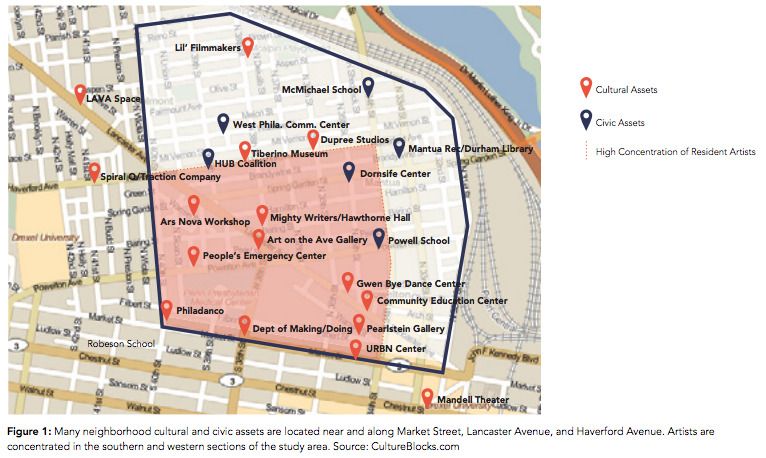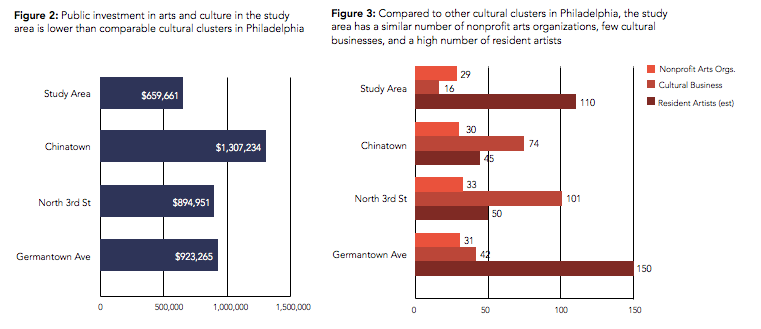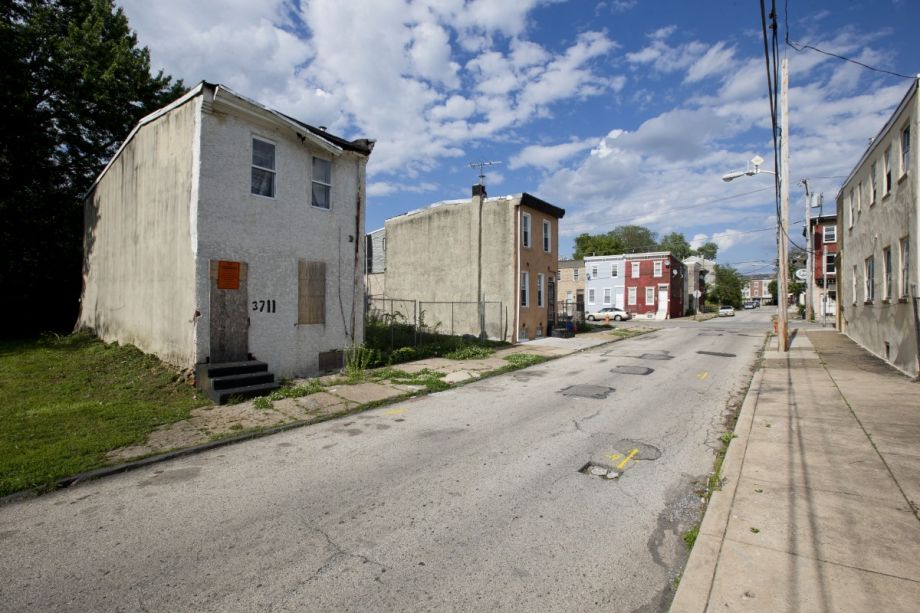Collectively the West Philadelphia neighborhoods of Mantua, Powelton Village and West Powelton have some of the alchemy that makes a great arts district in any city: resident artists, cultural organizations, arts education programs and passionate civic groups. But if you asked most Philadelphians to name some of the city’s arts-centric areas, you’re more likely to get responses like Fishtown, Chinatown or Germantown before ever hearing about any of the cultural organizations based in and around Lancaster Avenue, West Philadelphia’s northern axis. Just north of where the University of Pennsylvania transformed its surroundings, and amid Drexel University’s big expansion plans, one Drexel school is looking for ways to coalesce that West Philly arts community.
Mantua, long challenged by poverty, population decline and crime, has had a higher profile in the past year due to its Promise Zone designation and the raved-about art project, Funeral for a Home. Drexel’s Westphal College of Media Arts & Design noticed the developments happening just to the north and has recently released a report detailing its neighbors’ cultural ecosystem based on a year’s worth of research and interviews with residents and arts and civics organizations. The researchers from Westphal, prepped with the resources at a large university’s disposal, didn’t want to appear like they were dictating ideas to a vulnerable, transitioning community.

(Source: Drexel Westphal College of Media Arts & Design’s “A Fragile Ecosystem”)
“We wanted to give the people that we spoke to a way to see where they fit into the larger context of what was happening in the neighborhood,” says Julie Hawkins, one of the report’s lead researchers and Westphal’s arts administration program director. “We wanted to do it for ourselves, but we also wanted the people who participated who live and work in these neighborhoods everyday — from the residents to the cultural institutions and artists we spoke to — a better sense of ‘Here’s what you thought, and here’s how it’s reflected in the bigger picture.’”
Using data from CultureBlocks, the researchers found that strengths in the area included the numbers of resident artists and cultural organizations, but that compared to some of the other cultural clusters in the city, it had a fewer number of arts-related businesses and much less investment by city and state government and local foundations.

(Source: Drexel Westphal College of Media Arts & Design’s “A Fragile Ecosystem”)
The report identified two major areas of opportunity based on feedback from the community and recommended “a network that supports the area’s ecosystem” and connecting “the neighborhoods’ cultural assets to the area’s civic agenda and its collaborative opportunities.” It also suggests how community groups could potentially take advantage of Drexel’s resources for bridge-building, like using university space for meetings.
Kira Strong, vice president of community and economic development at the People’s Emergency Center, a local community development corporation, was not surprised by the report’s results. “I think it really affirmed what we have a little bit of a sense of through some of our neighborhood planning work,” she comments. “That there is a lack of connectedness between some of the smaller groups and the potential for them to leverage each other.”
The People’s Emergency Center is highlighted in the study for its support of the local arts community and its network-building. Its 4050 Apartments project is transforming a vacant lot into a 20-unit artists’ live/work development in West Powelton. Its Neighborhood Time Exchange project is a collaboration with Philadelphia’s Mural Arts Program and Ontario’s Broken City Lab, where artists are going to be exchanging a commitment to contribute time and effort on community improvement projects for studio time in a space along Lancaster Avenue.
But it’s not all hand-holding and trust falls. Some residents and groups are still wary about Drexel taking it upon themselves to have an advisory role in these transitioning neighborhoods. Dewayne Drummond, president of the Mantua Civic Association says that the arts are “different in Mantua than they are in Powelton Village and they’re different in West Powelton too.”Drummond adds that the conversation about resources is “not just about [what] Drexel has. It’s about the resources that the community has also. I think there are some resources in the community that can help to better Drexel’s community and civic engagement. It’s a partnership. This is not about who could be the surrogate mother or a surrogate father, this is about a family.”
Hawkins says that she has heard and understands Drummond’s perspective. “Certainly there’s a sense of distrust of institutions in general [in this community]. That’s a natural thing. What we found is that the more we had interactions with people as individuals, it was easier to have a conversation. It can be easy to see Drexel as this big behemoth that’s doing things without anyone’s input. But in reality, like any institution, is made up of people. It’s the person-to-person communication that I find makes the biggest difference on the ground.”
Strong adds an additional vision about how Drexel could position itself moving forward, saying, “I think it would be able to thoughtfully support really diverse and high-quality groups that are already in existence in these neighborhoods. It would promote this area as a unique, really vibrant place, while recognizing that it’s those groups that help make it so. Certainly leveraging the resources of academia is great, but I think the best possibility there, is Drexel being able to amplify and push out what [already] exists. And be a good, strong partner to those groups.”
The Equity Factor is made possible with the support of the Surdna Foundation.

Alexis Stephens was Next City’s 2014-2015 equitable cities fellow. She’s written about housing, pop culture, global music subcultures, and more for publications like Shelterforce, Rolling Stone, SPIN, and MTV Iggy. She has a B.A. in urban studies from Barnard College and an M.S. in historic preservation from the University of Pennsylvania.

















